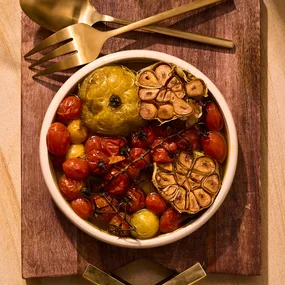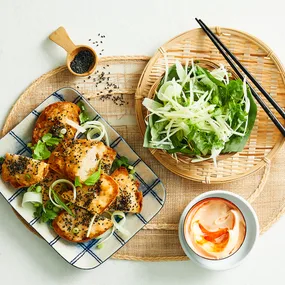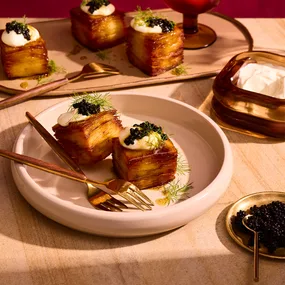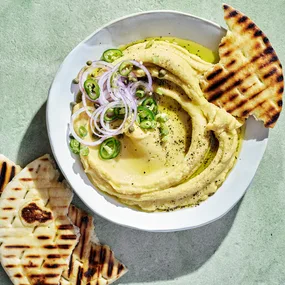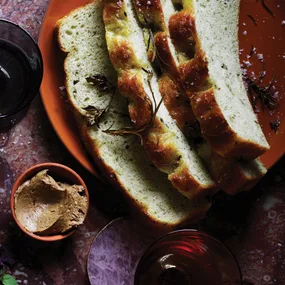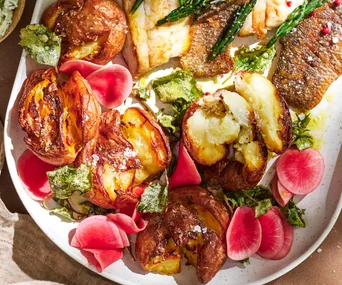Among the most celebrated dumplings at any yum cha restaurant, siu mai (aka shumai) to a Chinese person is like a meat pie to an Aussie. And yet, like any meat pie, there are the good and the very ordinary siu mai. Open-topped steamed dumplings traditionally made with minced pork wrapped in wonton pastry and served in bamboo baskets, siu mai as we know them in Australia and the West in general are from the Cantonese or Southern school.
Considered by the Cantonese to be one of the “big three” dim sum (the other two being char siu bao and har gau), siu mai apparently originated in the Inner Mongolian city of Hohhot. While this may be apocryphal, what is interesting is, having popped up in the city of Guangzhou (formerly Canton), how this delicious morsel travelled to Hong Kong and finally to the rest of the world.
To the Chinese, southern China, where Guangzhou is situated, has always been known as a region for excellent food. As such, Guangzhou enjoys the reputation throughout the country as to the go-to city for dim sum. Here, dim sum chefs have turned the making of these parcels into an art form. They were served to accompany tea, particularly in restaurants known as teahouses – cha lou.
After Hong Kong became a British colony in 1842, dim sum cooks migrated across the Pearl River Delta to work in humble teahouses and stalls in Sai Ying Pun, an area settled by the Chinese on the island. While the history of these simple teahouses is vague, legendary establishments such as Lin Heung (founded in Guangzhou in 1889) and Luk Yu (1933) teahouses have served siu mai along with other dumplings to this day. And it’s from Hong Kong that dim sum chefs were recruited to work in Cantonese restaurants all over the world, hence the reputation of Hong Kong chefs.

Tip 1: Use a pasta machine to make your dumpling wrappers
(Photo: John Paul Urizar)Tip 1: Use a pasta machine to make your dumpling wrappers
You can buy wonton wrappers or make your own. Traditionally, a long rolling pin is used when making wonton wrappers and noodles to roll the dough out on a large table; using a pasta machine is much quicker.
To form the siu mai, many dim sum chefs trim off the square edges of the wrappers for aesthetics, but this isn’t necessary (we’ve left them square here).

Tip 2: Aim for a good ratio of fat and meat in your filling
(Photo: John Paul Urizar)Tip 2: Aim for a good ratio of fat and meat in your filling
Meaning “cook and sell”, siu mai are easy to make. They’re the first dumplings I made as a kid in Malaysia. The key is to create the “mouth-feel” or hau gum, which is important to this dumpling. It should have “bounce” in the mouth. Most yum cha restaurants typically use chopped pork only, with pork fat in the filling to give the characteristic bounciness. But I find some cheaper places use much more pork fat, which makes the dumpling less palatable. The best ratio I find is 80 per cent lean meat to 20 per cent fat, so I often ask my butcher to mince pork belly for me.
To create that bounce factor, better restaurants now use a combination of pork and prawns. I’ve done so here, and with umami-packed shiitake, crunchy water chestnuts, a splash of soy sauce and Shaoxing wine, and potato flour and eggwhite as binding agents, the filling is quite delicious.

Tip 3: When it comes to folding your siu mai, have patience
(Photo: John Paul Urizar)Tip 3: When it comes to folding your siu mai, have patience
I put a teaspoonful of the filling in the middle of the wrapper and then gather up the wrapper around it. The wrapper should fold naturally into pleats, although it’s best to do this manually. Squeeze the sides gently to form a basket or cylinder, which ensures the wrapper will stick to the filling, then tap the dumpling bottom lightly to flatten it. While working with each dumpling, be sure to cover your wrappers with a damp tea towel to keep them from drying out.

Tip 4: Line your bamboo steamer with non-stick paper, or brush with oil.
(Photo: John Paul Urizar)Tip 4: Line your bamboo steamer with non-stick paper, or brush with oil
When all the dumplings are made, decorate the tops with diced carrots, peas, goji berries or crab roe, the traditional garnish. Purists then place the dumplings on thinly sliced carrots to stop the bottoms from getting wet; I line my bamboo baskets with non-stick paper and prick a few holes in it for the steam to get through (you can also oil the baskets). When you’re ready to eat, pop the dumplings in the baskets and steam them for about 10 minutes.

Tip 5: Serve your siu mai as soon as possible
(Photo: John Paul Urizar)Tip 5: Serve your siu mai as soon as possible
Serve them at once with your favourite dipping sauce, or without if you prefer – they’re also delicious as they are.
Siu mai dumplings freeze well, which makes them perfect standbys. I always have them on hand in the freezer for when unexpected visitors arrive. They’re of course great with Chinese tea and, I might add, a glass of Champagne, too.
Siu mai recipe
Serve these with dipping sauces such as Chinkiang vinegar and soy sauce, and with julienned ginger. Makes around 30.

